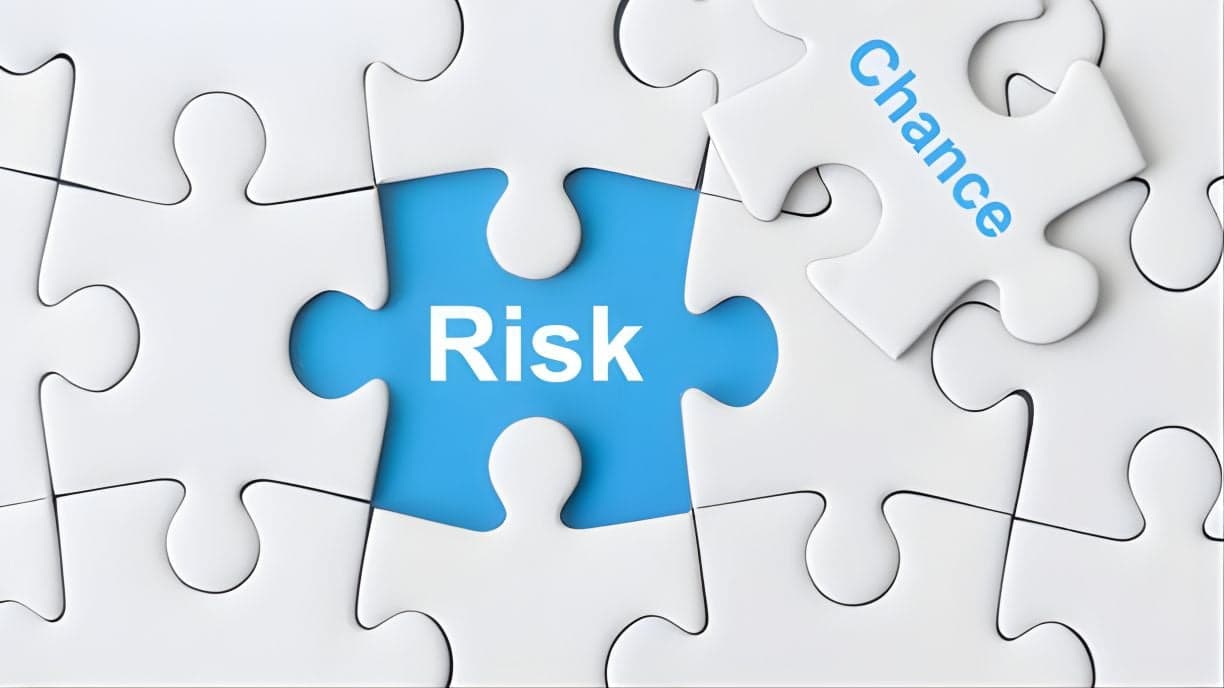Acquiring a distressed business: opportunity or trap?

Introduction
A distressed business can represent an attractive acquisition opportunity for an experienced buyer. Reduced purchase price, turnaround potential, undervalued assets: there is no shortage of arguments. But acquiring a weakened structure also carries major risks that can quickly transform the opportunity into a financial nightmare.
This type of acquisition, called a distressed acquisition or turnaround, requires a radically different approach from a standard acquisition. The financial stakes are higher, the operational pressure immediate, and the margins for error virtually non-existent.
So, acquiring a distressed business: opportunity to seize or trap to avoid? The answer depends above all on your profile, your resources and your ability to conduct rigorous analysis. This article examines the real opportunities, the concrete risks, the profile required to succeed in a turnaround, and the steps of an essential reinforced due diligence before committing yourself.
📌 Summary (TL;DR)
Acquiring a distressed business offers advantages (reduced price, turnaround potential) but carries significant risks: hidden liabilities, fragile clients, operational urgency. This type of acquisition requires an experienced profile, crisis management skills, solid financial resources and thorough due diligence covering financial, operational and legal aspects.
A realistic turnaround plan and the support of specialised experts are essential to transform the opportunity into success.
📚 Table of contents
What is a distressed business?
A distressed business shows signs of financial or operational fragility that threaten its viability. The most common symptoms include recurring cash flow problems, a significant drop in turnover, excessive debt, the loss of key clients or obsolescence of the business model.
It is essential to distinguish temporary difficulties from structural problems. A one-off decline due to an unfavourable economic context differs from a lasting loss of competitiveness. In Switzerland, certain legal situations signal advanced difficulty: composition moratorium, restructuring proceedings or the threat of imminent bankruptcy.
Understanding the nature and depth of the difficulties constitutes the first step before considering a distressed business acquisition.
The opportunities of a distressed acquisition
The purchase of a distressed business offers significant advantages for the informed buyer. The acquisition price is generally reduced, sometimes symbolic, allowing access to undervalued assets: equipment, patents, client base or know-how.
The turnaround potential can be high if the causes of the difficulties are identified and reversible. Competition between buyers is often limited, which strengthens your negotiating position. You can obtain favourable conditions: deferred payment, limited guarantees or selective acquisition of assets.
This approach is similar to value investing applied to SMEs: buying at low cost a business with significant value creation potential after restructuring. A successful turnaround can generate exceptional returns.
Major risks to anticipate
The dangers of a distressed acquisition are numerous and often underestimated. Hidden liabilities constitute the first trap: tax debts, unpaid social security contributions, guarantees given or unprovisioned disputes can explode after the acquisition.
The degraded reputation of the business complicates relationships with clients, suppliers and banks. Key talents often leave the ship before or during the transition. Client contracts become fragile, and suppliers demand cash payments out of mistrust.
The capital requirement to finance the turnaround frequently exceeds initial forecasts. Many buyers underestimate the time, energy and resources needed to stabilise and then turn around the business. Before committing yourself, consult our guide on the 15 warning signs before buying to identify red flags.
What profile to succeed in a turnaround?
Succeeding in the turnaround of a business requires a specific profile. This type of acquisition is not suitable for a first-time buyer nor for an entrepreneur seeking a smooth transition. The turnaround demands a rare combination of operational skills, solid financial resources and a network of reliable experts.
The three pillars of success are detailed below: crisis management experience, extended financial capacity and access to qualified external support.
Operational skills and experience
The buyer of a distressed business must possess solid crisis management experience. The ability to make rapid decisions, sometimes unpopular, is essential: team restructuring, contract renegotiation, abandonment of product lines.
In-depth sector expertise enables rapid identification of turnaround levers and avoidance of costly errors. Solid financial skills are essential for managing cash flow on a day-to-day basis, renegotiating debts and establishing realistic forecasts.
Stress resistance and psychological resilience are crucial. This is not a project for a beginner: prior experience in operational management or business transformation constitutes a major asset.
Sufficient financial resources
The purchase price of a distressed business may seem attractive, but it represents only a fraction of the total investment required. You will need to finance the turnaround: cash injection to stabilise operations, urgent investments, debt restructuring and coverage of initial losses.
Plan for available capital well above the acquisition price. Access to additional financing (banks, investors, bridging loans) strengthens your capacity for action. This situation contrasts sharply with an acquisition with no down payment, which remains exceptional and unsuitable for distressed situations.
Network and external support
A network of experts specialised in restructuring constitutes a decisive asset. Lawyers, fiduciaries experienced in turnarounds and sector consultants provide specialist expertise on complex legal, tax and operational aspects.
Leez provides a network of qualified partners to support you in this type of demanding project. Also consider acquiring with a partner to share financial risks and combine complementary skills.
External support reduces blind spots and significantly increases your chances of success in a turnaround.
Reinforced due diligence: the crucial step
The preliminary analysis of a distressed business must be particularly thorough. Superficial due diligence exposes you to major risks and unpleasant surprises after the acquisition.
Unlike a standard acquisition, you must investigate not only the current state of the business, but also understand precisely the deep causes of its difficulties. This investigation covers three critical dimensions: financial, operational and legal.
Each aspect requires meticulous attention and the involvement of specialists. Do not neglect any grey areas.
In-depth financial analysis
Examine the accounts over at least three to five years to identify trends and the real causes of the difficulties. Analyse the cost structure, margins by product or service, and the evolution of working capital requirements.
Meticulously verify all debts: tax, social security, bank, suppliers, as well as off-balance sheet commitments (guarantees, sureties, leasing). Identify doubtful receivables and obsolete stock that artificially inflate assets.
Establish realistic cash flow projections for the first 12 to 24 months. How much will need to be injected to stabilise the situation? This financial analysis determines the economic viability of the turnaround project.
Operational and commercial audit
Assess the real state of client and supplier contracts. What is the concentration of turnover? Excessive dependence on one or two key clients represents a major risk, especially if they are considering leaving.
Analyse the quality of products or services, the competitive position and the reasons for the loss of market share. Inspect the condition of equipment and infrastructure: what urgent investments are necessary?
Meet key employees to assess their skills and motivation to stay. The team in place can be a valuable asset or, conversely, an obstacle to the turnaround.
Legal aspects and hidden liabilities
Identify all current or potential disputes: conflicts with clients, suppliers, employees or authorities. Verify guarantees given, long-term contractual commitments and early termination clauses.
Check regulatory compliance in all areas: social, tax, environmental, workplace safety. Environmental liabilities (pollution, waste) can generate considerable remediation costs.
Call on lawyers specialised in business law and restructuring to legally secure the transaction. This expertise limits unpleasant surprises and protects your investment.
Developing a realistic turnaround plan
A solid turnaround plan is based on realistic assumptions and concrete actions. Identify priority turnaround levers: reduction of structural costs, commercial repositioning, conquest of new markets or improvement of productivity.
Define a precise timetable with clear stages and monitoring indicators. Plan several scenarios (optimistic, realistic, pessimistic) to anticipate difficulties and quickly adjust your strategy.
Secure short-term cash flow: this is the absolute priority. Renegotiate payment terms, reduce stock, collect receivables and suspend non-essential investments.
Communicate quickly and transparently with all stakeholders: employees, clients, suppliers, banks. Trust is rebuilt through visible actions and concrete results. Speed of execution often makes the difference between success and failure in a turnaround.
Finding distressed acquisition opportunities on Leez
Certain distressed businesses are available on the Leez platform. They are often distinguished by attractive acquisition prices or specific mentions in their description. Regularly consult the businesses for sale to identify these opportunities.
The importance of reinforced due diligence remains paramount, whatever the price offered. Our network of partners (fiduciaries, lawyers, restructuring experts) can support you in this type of complex project.
Use our business valuation tool to understand the gap between the current value and the potential after turnaround. This analysis helps you calibrate your offer and estimate the possible return on investment.
Acquiring a distressed business represents a high-risk bet, but also an opportunity to acquire a structure at a reduced price with significant valuation potential. The success of a turnaround rests on three pillars: thorough due diligence to identify all hidden risks, sufficient financial resources to absorb initial losses and finance the turnaround, and an experienced buyer profile with solid operational skills.
This strategy is not suitable for novice entrepreneurs nor for those seeking immediate stability. It requires an ability to make rapid decisions, to manage pressure and to surround oneself with qualified experts (lawyers, fiduciaries, restructuring specialists).
If you have the necessary profile and resources, explore the acquisition opportunities available on Leez. Our platform gives you access to businesses for sale in complete transparency, and our network of specialised partners can support you in the analysis and structuring of your turnaround project.


